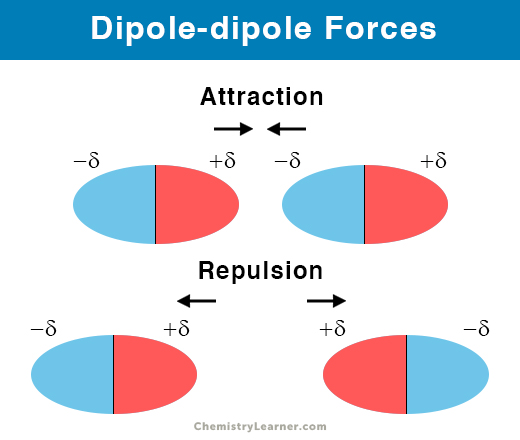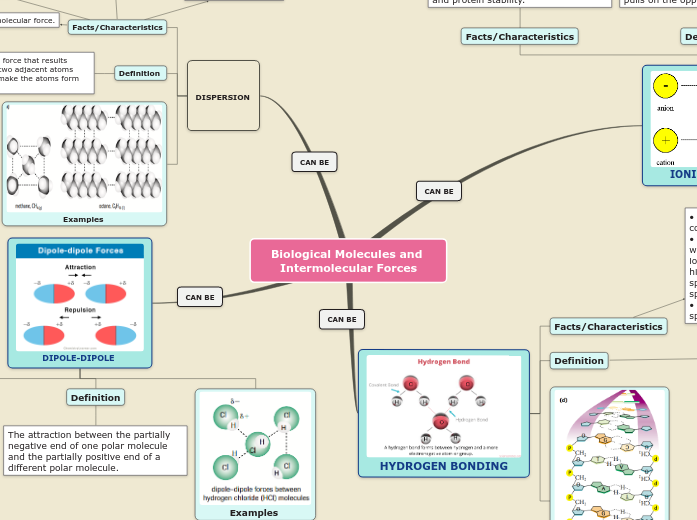Biological Molecules and Intermolecular Forces
IONIC DIPOLE
Facts/Characteristics
• Stronger than dipole-dipole interactions
• Electrostatic attraction between oppositely charged ions.
• Holds ions together in salt (NaCl)
• Contributes to enzyme active sites and protein stability.
Definition
When a charged ion is attracted to a polar molecule. The polar molecule has a partially charged side, which pulls on the oppositely charged ion.
Example
HYDROGEN BONDING
Facts/Characteristics
• Between polar molecules
containing N, O, or F
• Accounts for the properties of water: high solubility of polar and ionic substances, cohesion, adhesion, high surface tension, capillarity, high specific heat capacity, and high specific heat of vaporization.
• Hydrogen bonding within proteins in
spider silk contributes to its strength.
Definition
A strong type of dipole interaction that happens when hydrogen (H) is bonded to nitrogen (N) or oxygen (O).
Example
DISPERSION
Facts/Characteristics
• Exist between all atoms and molecules. • Helium, and small nonpolar molecules, such as methane, CH 4(g) (in natural gas) which is why these materials are gases at room temperature
• Only forces that hold nonpolar molecules to one another
• Present in lipid bilayer
• The weakest intermolecular force.
Definition
A temporary attractive force that results when the electrons in two adjacent atoms occupy positions that make the atoms form temporary dipoles.
Examples

DIPOLE-DIPOLE
Facts/Characteristics
• Stronger than London forces
• Hold polar molecules to one anothe
• Between polar molecules, influencing protein folding
Definition
The attraction between the partially negative end of one polar molecule and the partially positive end of a different polar molecule.
Examples
